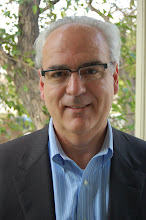A .K. was first admitted to Hillsides on 4/05/06 and was discharged on 6/5/07. When A.K. entered Hillsides, he was morbidly obese, weighing more than 148 pounds. When he was discharged a year later, he had dropped to 122 pounds through a combination of diet and intensive exercise supervised by the nursing and recreation departments. While still overweight, his general health had improved dramatically. Upon his re-entry into Hillsides’ residential program in July of this year, after having been removed, he weighed 226 pounds.
At the time of discharge, A.K. was still not stabilized, although he had been doing better. Hillsides’ advocates were opposed to the discharge both for his fragility, and also because his mother had barely been released from jail and had not received services to help her deal with this boy. The Los Angeles County’s Department of Children and Family Services made the decision to move him with no input from Hillsides. It wasn’t until Hillsides’ intervention that the County agreed to a post-discharge Team Decision Making meeting (TDM). (A TDM meeting is an opportunity for all interested parties in the life of the foster care child to convene and address his discharge and treatment plan for a successful replacement.)
At that point, Wraparound Services were initiated and provided by Hillsides’ team. A.K. did not do well at home, and his mother was not effective. (Wraparound is a program where the process of creating safe places for a child includes wrapping support services around the child and the entire family to increase the possibility of successful outcomes). He was readmitted to Hillsides on 7/22/08.
REFLECTION
1. Have a TDM that would include the mother in the planning process
2. Set up a plan that would insure that she was established back into the community with a job that could support A.K. (the mother and son were homeless when he returned to Hillsides).
3. Provide Wraparound services well in advance of his returning home
CONCLUSION
1. Family involvement in the treatment process is a key factor.
2. A plan for discharge agreed by all parties, Hillsides, DCFS, the child and the family is necessary for a successful transition. (A plan is not going to work if the child or the receiving party is saying they are not ready.)
3. We should consider mandatory supportive services in the home.
4. Once a plan has been agreed upon, there should be some benchmarks set to determine the move-in date.
5. As a general rule, the residential treatment agency should provide Wraparound services to the receiving family where ever possible, since they are the ones who know the child and the family. (This would entail an exception to the Service Provider Areas (SPA) specific structure of the Wraparound program, since most residential treatment centers do not have Wraparound programs in all the SPAs.)
Wednesday, December 17, 2008
The Second in a Series of Seven Stories
Labels:
children,
DCFS,
foster care,
foster youth,
Los Angeles,
pasadena
Subscribe to:
Post Comments (Atom)



No comments:
Post a Comment